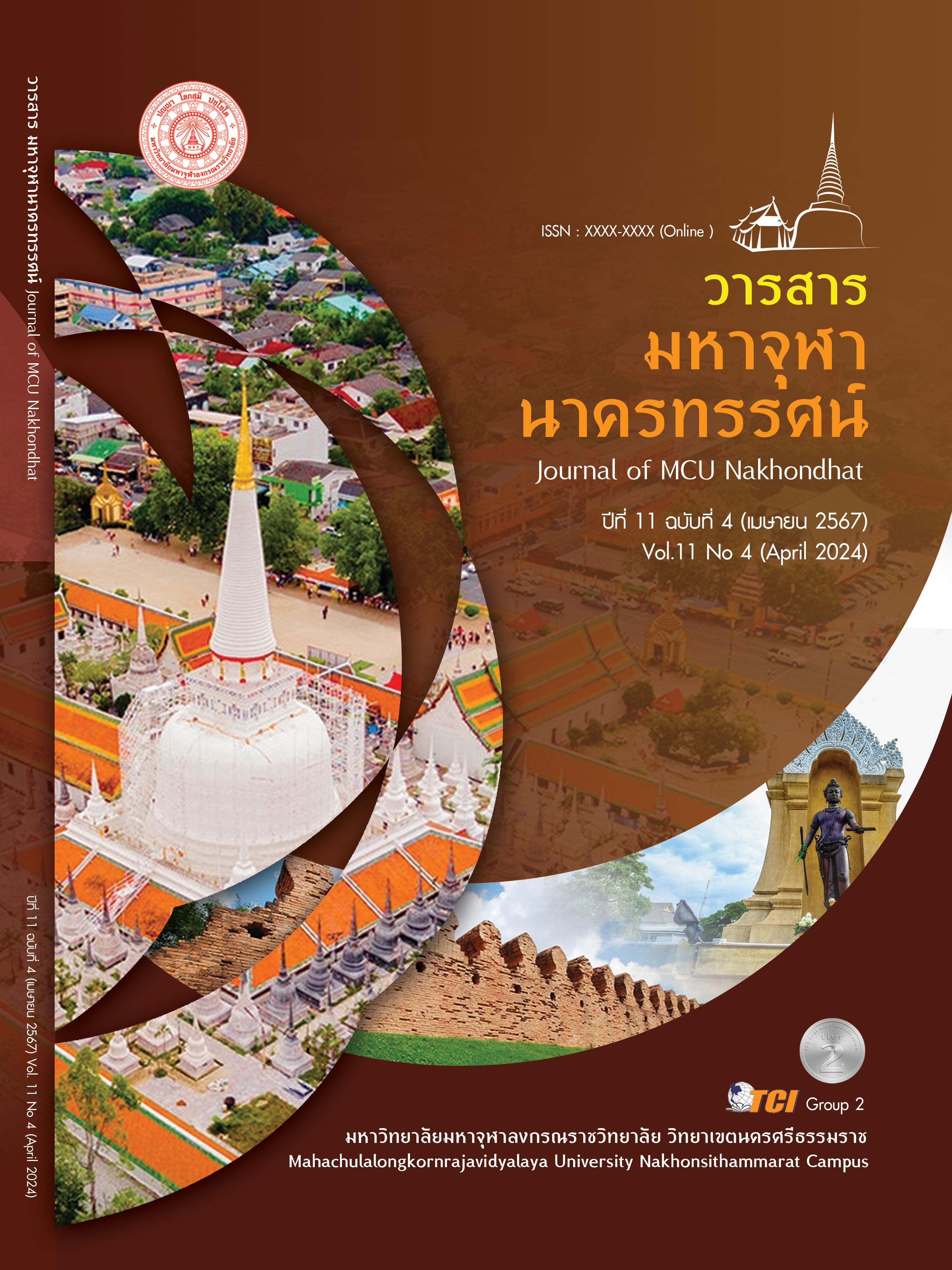CREATING A PEACEFUL COMMUNITY WITH BUDDHIST PRINCIPLES
Main Article Content
Abstract
This academic article aims to present the creation of a peaceful community using Buddhist principles by applying Buddhist principles as guidelines for building a peaceful community. At present, the world is experiencing conflicts in many dimensions. Creating a community filled with peace, tranquility, happiness, and harmony, therefore, is extremely important, and applying Buddhist principles to everyday life is a good guideline. By using the Four Noble Truths, problems can be systematically analyzed, and steps can be taken to prepare community development plans. Applying the Noble Eightfold Path with appropriateness will ensure peace and eradicate encroachment among organizations of such societies. Applying the six principles of Sāraṇīyadhamma can build endearment, respect, and support for helping each other, and using the seven principles of Aparihāniyadhamma as useful Dhamma can lead to love and unity in the community. In addition, participation within the community can cause prosperity within the community. Buddhist principles provide important guidelines for creating peaceful communities. Buddhist principles build the practice of mindfulness and meditation, including the development of loving - kindness and compassion, non - harassment, compassionate communication, forgiveness, and building unity. The use of Buddhist principles in everyday life through study and practice promotes the study of Buddhist principles among schools, communities, and temples. Activities for practicing the teaching of Buddhism include meditation, mindfulness, and introspection. The creation of a network incorporating Buddhist temples, communities, and various agencies that promote Buddhist principles with communities through the government’s policies and projects is supposed to encourage communities to build nurturing environments for happiness.
Article Details

This work is licensed under a Creative Commons Attribution-NonCommercial-NoDerivatives 4.0 International License.
References
ชนาภา ศรีวิสรณ์. (2563). กระบวนการสร้างสันติสุขสัมพันธ์ตามหลักสันติวิธีเชิงบูรณาการของชุมชนดอยช้าง จังหวัดเชียงราย. ใน ดุษฎีพุทธศาสตรดุษฎีบัณฑิต สาขาวิชาสันติศึกษา. มหาวิทยาลัยมหาจุฬาลงกรณราชวิทยาลัย.
ธีรยุทธ พึ่งเทียร. (2541). พระพุทธศาสนากับการพัฒนาชุมชน. พระนครศรีอยุธยา: มหาวิทยาลัยมหาจุฬาลงกรณราชวิทยาลัย.
ประเวศ วะสี. (2545). สันติวิธีกับสิทธิมนุษยชน. กรุงเทพมหานคร: สำนักงานคณะกรรมการสิทธิมนุษยชนแห่งชาติ.
พระธรรมปิฎก (ป.อ.ปยุตฺโต). (2548). สู่การศึกษาแนวพุทธ. (พิมพ์ครั้งที่ 6). กรุงเทพมหานคร: กระทรวงศึกษาธิการ.
พระพรหมคุณาภรณ์ (ป.อ. ปยุตฺโต). (2548). พจนานุกรมพุทธศาสตร์ ฉบับประมวลธรรม. (พิมพ์ครั้งที่ 13). กรุงเทพมหานคร: บริษัท เอสอาร์พริ้นติ้งแมสโปรดักซ์ จำกัด.
มหาวิทยาลัยมหาจุฬาลงกรณราชวิทยาลัย. (2539). พระไตรปิฎกฉบับภาษาไทย ฉบับมหาจุฬาลงกรณราชวิทยาลัย. กรุงเทพมหานคร: มหาจุฬาลงกรณราชวิทยาลัย.
วิลาสินี โสภาพล. (2564). การสร้างชุมชนสันติสุขภายใต้สังคมพหุวัฒนธรรม : กรณีศึกษาบ้านหน้าทับ อ. ท่าศาลา จ. นครศรีธรรมราชและชุมชนตำบลแม่สะเรียง อ. แม่สะเรียง จังหวัดแม่ฮ่องสอน. ใน รายงานการวิจัย. สถาบันพระปกเกล้า.
เสฐียรพงษ์ วรรณปก. (2533). อปริหานิยธรรม 7 หลักธรรมสำหรับใช้ในการปกครอง. กรุงเทพมหานคร: สำนักพิมพ์มติชน.
Etzioni, A. (1993). The Spirit of Community: Rights, Responsibilities, and The Communitarian Agenda. USA: Crown.
Galtung, J. (1969). Violence, peace, and peace research. Journal of Peace Research, 6(3), 167-191.


